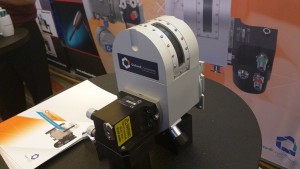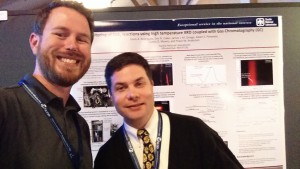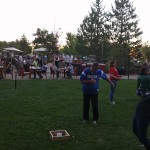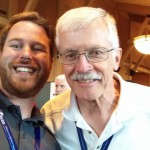There are several key meetings and conferences each year which might concern material scientists in general, but there’s only one exclusively dedicated to analytical X-ray techniques. The Denver X-ray Conference (DXC) has been organized by the International Center for Diffraction Data (ICDD) for the past 64 years! I don’t get to attend as often as I’d like, but I’ve never regretted making the trip. It’s not always in Denver, but The Westin Hotel in Westminster, CO played host yet again this year which makes everything very convenient and relatively inexpensive. I was fortunate enough to merit an invitation from our good friends at Materials Data, Inc. this year and attended as their guest.
The main draw for me is the educational sessions. Classes taught by legends in the industry on everything from basic XRF and XRD theory to advanced structure determination and pair distribution function (PDF) analysis. Topics vary year to year, but this time I sat in on mainly XRD courses. Instructors are usually prominent university professors or industry experts. ICDD has a strict policy against overt advertising in these sessions which means information is presented in “platform neutral” terms and is beneficial for all attendees. The exhibit hall is full of vendors promoting everything from complete XRF and XRD systems (PANalytical, Bruker, Rigaku, Thermo etc) to sample preparation equipment (Chemplex, Spex, Claisse, Mikron, Angstrom). One of the most interesting products I saw was the latest D2 Phaser from Bruker with a new LynxEye PSD capable of eliminating Cu KB1 peaks without the need for a Ni filter. This doesn’t sound like that impressive of a feat until one considers that this will triple the intensities with an inverse effect on data collection times.
 Proto has expanded their offerings to include a benchtop XRD with some impressive capabilities. Most notably, it is the only benchtop I’m aware of which offers independent control of the Theta and 2Theta axes. Grazing incidence and rocking curves are valuable data collection techniques which have thus far been unavailable to small XRD users. It’s always going to be hard for a small instrument to match the data quality of a true, research grade XRD such as the D500, D5000 and D8 lines, but they’ve certainly upped their game in this area.
Proto has expanded their offerings to include a benchtop XRD with some impressive capabilities. Most notably, it is the only benchtop I’m aware of which offers independent control of the Theta and 2Theta axes. Grazing incidence and rocking curves are valuable data collection techniques which have thus far been unavailable to small XRD users. It’s always going to be hard for a small instrument to match the data quality of a true, research grade XRD such as the D500, D5000 and D8 lines, but they’ve certainly upped their game in this area.

Oxford was onhand to show off some of their very impressive low temperature stages. The more elaborate offerings are capable of cooling a sample to 12K… You read that correctly, 12 Kelvin. They do this with a regenerative He-based cooling system. I installed a D8 last year at Johns Hopkins which was purchased as nothing more than a base for one of these stages.
I spend most of my time bouncing between industrial, academic and government laboratories maintaining and upgrading their hardware so I see many of the attendees throughout the year though it’s rare to spend time with them casually. It’s always a good time with laughs, enlightenment and education.





Sorry, the comment form is closed at this time.